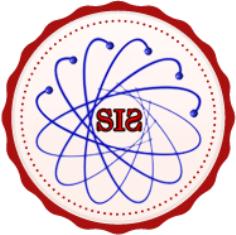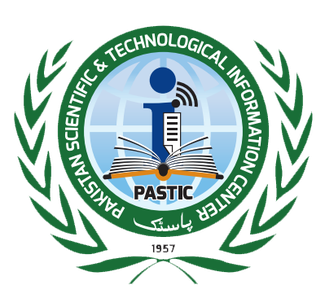Leveraging Machine Learning for Spreading Factor Optimization in Lora WAN Networks
Keywords:
Internet of Things (IoT), Machine Learning (ML), LSTM, Spreading Factor (SF), Transmission Power (TP)Abstract
The Internet of Things (IoT) has witnessed exponential growth and widespread integration across diverse sectors such as agriculture, logistics, smart cities, and healthcare. Among various IoT communication paradigms, the Long-Range Wide Area Network has emerged as a prominent and preferred technology, attributed to its extended transmission range, energy efficiency, and cost-effectiveness. Nevertheless, the escalating proliferation of IoT endpoints has amplified the complexity of efficient resource orchestration, particularly in Spreading Factor (SF) optimization within infrastructures. To mitigate this challenge, this study introduces a Machine Learning–driven Adaptive Data Rate (ML-ADR) framework for dynamic SF management. A Long Short-Term Memory (LSTM) neural network was meticulously trained using a dataset synthesized via ns-3 network simulations to achieve optimal SF classification. The pre-trained LSTM model was subsequently deployed on end-device nodes to enable intelligent and adaptive SF allocation using real-time data during simulation. Experimental evaluations reveal significant enhancements in packet delivery ratio and notable reductions in energy consumption, thereby validating the efficacy and scalability of the proposed ML-ADR approach.
References
K. Q. Abdelfadeel, D. Zorbas, V. Cionca, and D. Pesch, “FREE - Fine-Grained Scheduling for Reliable and Energy-Efficient Data Collection in LoRaWAN,” IEEE Internet Things J., vol. 7, no. 1, pp. 669–683, Jan. 2020, doi: 10.1109/JIOT.2019.2949918.
L. Acosta-Garcia, J. Aznar-Poveda, A. J. Garcia-Sanchez, J. Garcia-Haro, and T. Fahringer, “Proactive Adaptation of Data Rate in Mobile LoRa-Based IoT Devices Using Machine Learning,” IEEE Veh. Technol. Conf., 2024, doi: 10.1109/VTC2024-SPRING62846.2024.10683082.
M. Ali Lodhi et al., “Tiny Machine Learning for Efficient Channel Selection in LoRaWAN,” IEEE Internet Things J., vol. 11, no. 19, pp. 30714–30724, 2024, doi: 10.1109/JIOT.2024.3413585.
T. R. Khola Anwar, “RM-ADR: Resource Management Adaptive Data Rate for Mobile Application in LoRaWAN,” Sensors, vol. 21, no. 3, p. 7980, 2021, doi: https://doi.org/10.3390/s21237980.
J. Y. Aloÿs Augustin, “A Study of LoRa: Long Range & Low Power Networks for the Internet of Things,” Sensors, vol. 16, no. 9, p. 1499, 2016, doi: https://doi.org/10.3390/s16091466.
L. Beltramelli, A. Mahmood, P. Osterberg, M. Gidlund, P. Ferrari, and E. Sisinni, “Energy Efficiency of Slotted LoRaWAN Communication with Out-of-Band Synchronization,” IEEE Trans. Instrum. Meas., vol. 70, 2021, doi: 10.1109/TIM.2021.3051238.
N. Benkahla, H. Tounsi, Y. Q. Song, and M. Frikha, “Enhanced ADR for LoRaWAN networks with mobility,” 2019 15th Int. Wirel. Commun. Mob. Comput. Conf. IWCMC 2019, pp. 514–519, Jun. 2019, doi: 10.1109/IWCMC.2019.8766738.
S. P. Matteo Bertocco, “Estimating Volumetric Water Content in Soil for IoUT Contexts by Exploiting RSSI-Based Augmented Sensors via Machine Learning,” Sensors, vol. 23, no. 4, p. 2033, 2023, doi: https://doi.org/10.3390/s23042033.
U. R. Martin Bor, “Do LoRa Low-Power Wide-Area Networks Scale?,” MSWiM 2016 - Proc. 19th ACM Int. Conf. Model. Anal. Simul. Wirel. Mob. Syst., 2016, doi: https://doi.org/10.1145/2988287.2989163.
A. Bounceur et al., “CupCarbon-Lab: An IoT emulator,” CCNC 2018 - 2018 15th IEEE Annu. Consum. Commun. Netw. Conf., vol. 2018-January, pp. 1–2, Mar. 2018, doi: 10.1109/CCNC.2018.8319313.
L. V. der P. Gilles Callebaut, Geoffrey Ottoy, “Cross-Layer Framework and Optimization for Efficient Use of the Energy Budget of IoT Nodes,” Eur. Union, 2018, [Online]. Available: https://arxiv.org/pdf/1806.08624
C. G. Lluís Casals, “The SF12 Well in LoRaWAN: Problem and End-Device-Based Solutions,” Sensors, vol. 21, no. 19, p. 6478, 2021, doi: https://doi.org/10.3390/s21196478.
D. Croce, M. Gucciardo, S. Mangione, G. Santaromita, and I. Tinnirello, “Impact of LoRa Imperfect Orthogonality: Analysis of Link-Level Performance,” IEEE Commun. Lett., vol. 22, no. 4, pp. 796–799, Apr. 2018, doi: 10.1109/LCOMM.2018.2797057.
M. Naeem, M. Albano, D. Magrin, B. Nielsen, and K. Guldstrand, “A Sigfox Module for the Network Simulator 3,” ACM Int. Conf. Proceeding Ser., pp. 81–88, Jun. 2022, doi: 10.1145/3532577.3532599;PAGEGROUP:STRING:PUBLICATION.
A. G. Salah Eddine Elgharbi, Mauricio Iturralde, Yohan Dupuis, “Maritime monitoring through LoRaWAN: Resilient decentralised mesh networks for enhanced data transmission,” Comput. Commun., vol. 241, p. 108276, 2025, doi: https://doi.org/10.1016/j.comcom.2025.108276.
S. I. A. Elkarim, M. M. Elsherbini, O. Mohammed, W. U. Khan, O. Waqar, and B. M. Elhalawany, “Deep Learning Based Joint Collision Detection and Spreading Factor Allocation in LoRaWAN,” Proc. - 2022 IEEE 42nd Int. Conf. Distrib. Comput. Syst. Work. ICDCSW 2022, pp. 187–192, 2022, doi: 10.1109/ICDCSW56584.2022.00043.
“System Reference document (SRdoc); Technical characteristics for Low Power Wide Area Networks Chirp Spread Spectrum (LPWAN-CSS) operating in the UHF spectrum below 1 GHz,” 2018, [Online]. Available: https://www.etsi.org/deliver/etsi_tr/103500_103599/103526/01.01.01_60/tr_103526v010101p.pdf
J. Weng, R. H. Deng, X. Ding, C. K. Chu, and J. Lai, “Conditional proxy re-encryption secure against chosen-ciphertext attack,” Proc. 4th Int. Symp. ACM Symp. Information, Comput. Commun. Secur. ASIACCS’09, pp. 322–332, 2009, doi: 10.1145/1533057.1533100.
T. ElGamal, “A Public Key Cryptosystem and a Signature Scheme Based on Discrete Logarithms,” Adv. Cryptol., pp. 10–18, 2000, [Online]. Available: https://link.springer.com/chapter/10.1007/3-540-39568-7_2
F. Nisar, M. Ameen, M. Touseef Irshad, H. Hadi, N. Ahmad, and M. Ladan, “XGBoost-Driven Adaptive Spreading Factor Allocation for Energy-Efficient LoRaWAN Networks,” Front. Commun. Networks, vol. 6, p. 1665262, doi: 10.3389/FRCMN.2025.1665262.
J. K. L. Yanjiang Yang, “Extended Proxy-Assisted Approach: Achieving Revocable Fine-Grained Encryption of Cloud Data,” Comput. Secur. -- ESORICS 2015, pp. 146–166, 2015, [Online]. Available: https://link.springer.com/chapter/10.1007/978-3-319-24177-7_8
A. K. Sultania, C. Delgado, and J. Famaey, “Implementation of NB-IoT Power saving schemes in ns-3,” ACM Int. Conf. Proceeding Ser., pp. 5–8, Jun. 2019, doi: 10.1145/3337941.3337944;PAGE:STRING:ARTICLE/CHAPTER.
W. Sun, X. Liu, W. Lou, Y. T. Hou, and H. Li, “Catch you if you lie to me: Efficient verifiable conjunctive keyword search over large dynamic encrypted cloud data,” Proc. - IEEE INFOCOM, vol. 26, pp. 2110–2118, Aug. 2015, doi: 10.1109/INFOCOM.2015.7218596.
H. L. Peng Zhang, Zehong Chen, Joseph K. Liu, Kaitai Liang, “An efficient access control scheme with outsourcing capability and attribute update for fog computing,” Futur. Gener. Comput. Syst., vol. 78, pp. 753–762, 2018, doi: https://doi.org/10.1016/j.future.2016.12.015.
F. Azizi, B. Teymuri, R. Aslani, M. Rasti, J. Tolvaneny, and P. H. J. Nardelli, “MIX-MAB: Reinforcement Learning-based Resource Allocation Algorithm for LoRaWAN,” IEEE Veh. Technol. Conf., vol. 2022-June, 2022, doi: 10.1109/VTC2022-SPRING54318.2022.9860807.
Y. Y. and L. W. Q. Huang, “Secure Data Access Control With Ciphertext Update and Computation Outsourcing in Fog Computing for Internet of Things,” IEEE Access, vol. 5, pp. 12941–12950, 2017, doi: 10.1109/ACCESS.2017.2727054.

Downloads
Published
How to Cite
Issue
Section
License
Copyright (c) 2025 50sea

This work is licensed under a Creative Commons Attribution 4.0 International License.




















